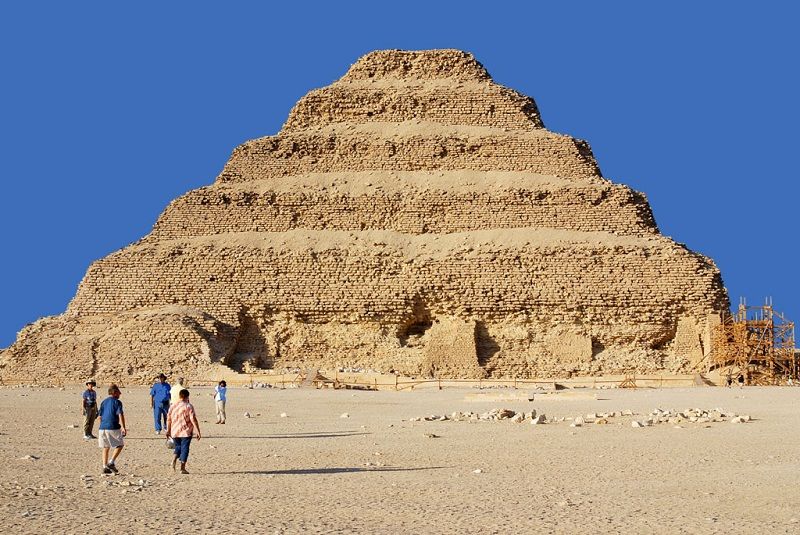Mortuary Temple of Hatshepsut, built into sandstone cliffs at Deir el-Bahri, is adjacent to Valley of the Kings and directly across Nile River from Karnak in the ancient Egyptian city of Thebes. It was designed for Queen Hatshepsut, a woman whose two-decade reign in mid-15th Century BC was largely unknown until 20th Century CE because her successor worked to erase her memory.

Hatshepsut’s sprawling three-story building was modeled after smaller Temple of Mentuhotep II, a nearby mortuary (funerary) temple built centuries earlier as both a tomb and a temple where priests could perform rituals to ensure dead ruler was safe and cared for in afterlife. Dedicated to god Amun, Hatshepsut’s temple was referred to as Djeser-Djeseru, or ”Holy of Holies.”
Hatshepsut was buried with her father, Thutmose I, in nearby Valley of the Tombs rather than in her funerary temple. Both temple and images of her throughout Egypt were defaced and vandalized during rule of her successor Thutmose III (who vandalized as part of a larger effort by Thutmose III, her successor, to write her out of history). Temple itself was repurposed and then abandoned for centuries and largely forgotten until it was excavated in late 19th and early 20th Centuries.
Large construction projects were a way to keep Egyptian population employed when fields were inundated each year by Nile and construction of temples dedicated to Egyptian gods was used to reinforce shared values. For centuries before Hatshepsut, Egyptian rulers had commissioned the construction of mortuary temples that were both ways of honoring gods and places where they could be sure their stories were told and remembered.
Queen Hatshepsut commissioned her temple at some point after she rose to power and it was built over the course of her rule. She apparently admired centuries-old mortuary temple of Mentuhotep II with a tomb built directly into the sandstone at Deir el-Bahri, but she wanted something bigger. Senenmut, her daughter’s tutor and Hatshepsut’s steward, was likely building’s chief architect, and he designed it to be a copy of Mentuhotep II’s temple on a significantly grander scale with unique internal features. It was dedicated to the god Amun, the most powerful and popular Egyptian god of period.
To establish himself as the rightful heir to his father’s throne and at least in part to prevent women from rising to power in the future, Thutmose III attempted to ensure that Hatshepsut’s reign was largely erased from history. He systematically destroyed public images of her (although not all of less public ones inside her temple) and defaced various buildings that included mention of her. He also made sure before his death that he or his father was given credit for two decades of her reign in official histories. It would be well over a thousand years before another woman (Cleopatra) rose to power in Egypt.
Queen Hatshepsut’s mortuary temple was built to honor the god Amun to ensure that Hatshepsut’s life story was told and to assert her power. Its scale dwarfed nearby Temple of Mentuhotep II. Temple of Hatshepsut has three levels connected by ramps of varying sizes, including a wide central ramp leading up the front of the building from the ground floor to second level that was flanked by two lion statues. Like many ancient Egyptian buildings, it is entirely symmetrical.
Hatshepsut was largely erased from history for thousands of years, but Mortuary Temple of Hatshepsut tells the story of a powerful woman and her two decades as ruler of ancient Egypt. An enormous three-level structure built at the base of a cliff across Nile River from Karnak in Thebes, her temple was dedicated to god Amun. Built during her reign in mid-15th Century BC, it contains temples dedicated to Anubis and Hathor and a sanctuary for Amun built into cliff itself as well as colonnades that tell about her life and her reign as one of few female pharaohs in Egyptian history.
📷 : Credit to the Owner






